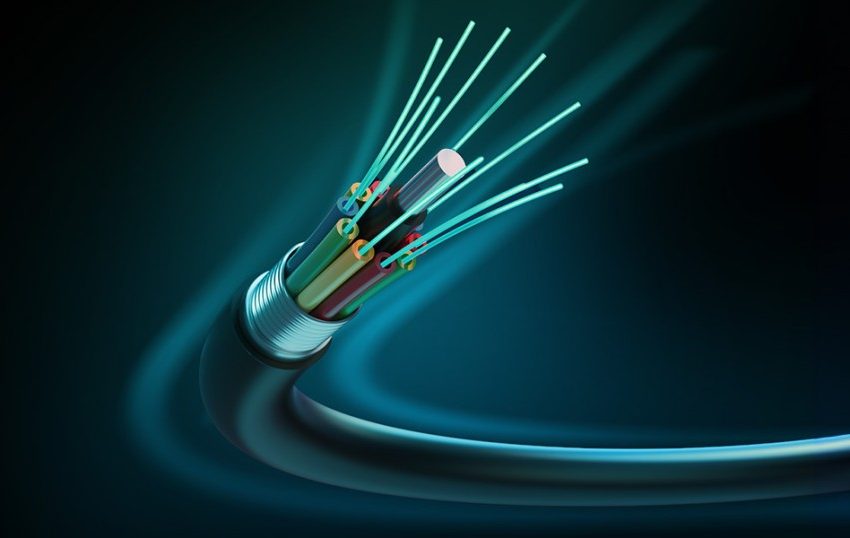How Do Fiber Optic Cables Enhance Data Transmission Speed and Quality?

For those involved in Arial and Underground Cable Installation Services, understanding how fiber optic cables boost data transmission speed and quality is vital. Fiber optics represent a significant advancement over traditional copper cables, offering a range of benefits that make them ideal for high-speed and high-quality data transmission. This article explores the mechanisms behind these enhancements and why fiber optics are preferred for modern communication needs.
Understanding Fiber Optic Technology
Fiber optic cables use light to transmit data, which fundamentally changes how data travels compared to copper cables that use electrical signals. This technology involves sending light pulses through thin strands of glass or plastic fibers. These pulses encode data, allowing for rapid and efficient transmission over long distances.
Speed Improvements with Fiber Optics
Fiber optic cables can transmit data at much higher speeds than copper cables due to several key factors:
1. Light Speed Transmission
- How It Works: Light travels through fiber optic cables at speeds approaching the speed of light, which is much faster than the electrical signals in copper cables.
- Impact: This high speed means that data can be sent and received more quickly, significantly reducing latency and improving overall network performance.
2. Bandwidth Capacity
- How It Works: Fiber optics offer a much greater bandwidth capacity compared to copper cables. This means they can handle more data simultaneously without degradation in performance.
- Impact: Increased bandwidth allows for higher data transfer rates and supports more users and applications on the same network, making fiber optics ideal for high-demand environments.
Quality of Data Transmission
Fiber optic cables also excel in maintaining data quality over long distances. This quality is influenced by several factors:
1. Minimal Signal Loss
- How It Works: Fiber optics experience very low signal attenuation compared to copper cables. Signal loss in fiber cables is minimal due to the efficiency of light transmission and the high quality of the glass or plastic used.
- Impact: Minimal signal loss ensures that data remains intact and accurate, even over long distances, which is crucial for reliable communication and data integrity.
2. Reduced Interference
- How It Works: Fiber optic cables are immune to electromagnetic interference (EMI) because they use light rather than electrical signals. Copper cables can be affected by EMI from nearby electrical devices or cables.
- Impact: The lack of interference in fiber optics results in clearer data transmission and fewer errors, leading to a more stable and reliable network connection.
Advantages of Fiber Optic Cables
Fiber optics offer several advantages over traditional copper cables, making them a preferred choice for many networking needs:
1. Long-Distance Transmission
- Description: Fiber optic cables are capable of transmitting data over much longer distances without the need for signal boosters or repeaters.
- Benefits: This long-distance capability makes fiber optics ideal for connecting remote locations and large-scale network infrastructures.
2. High-Speed Data Transfer
- Description: Fiber optics support extremely high data transfer rates, making them suitable for applications requiring large amounts of data to be transmitted quickly, such as streaming high-definition video or handling complex online transactions.
- Benefits: The high speed enhances user experience by reducing buffering times and improving overall network responsiveness.
3. Future-Proof Technology
- Description: Fiber optic technology is highly adaptable and can support future advancements in data transmission speed and capacity with minimal upgrades.
- Benefits: Investing in fiber optics provides a long-term solution, reducing the need for frequent upgrades and ensuring that the network can handle future demands.
Key Considerations for Installing Fiber Optics
When installing fiber optic cables, several factors need to be considered to maximize their performance:
1. Proper Installation Techniques
- Cable Routing: Ensure that fiber optic cables are installed with proper routing to avoid sharp bends or kinks, which can damage the fibers and affect performance.
- Connector Quality: Use high-quality connectors and termination techniques to ensure a reliable connection and minimize signal loss.
2. Maintenance and Testing
- Regular Testing: Perform regular testing of fiber optic cables to check for any issues with signal quality or connectivity. Tools such as optical time-domain reflectometers (OTDR) can help identify problems.
- Routine Maintenance: Keep the installation environment clean and free of dust or debris that could impact the performance of fiber optics.
Conclusion
Fiber optic cables offer significant advantages in data transmission speed and quality over traditional copper cables. By utilizing light for data transmission, fiber optics achieve higher speeds, greater bandwidth, minimal signal loss, and reduced interference. These benefits make fiber optics an excellent choice for modern networking needs, including Arial and Underground Cable Installation Services. With their long-distance capability and future-proof nature, fiber optics represent a reliable and efficient solution for high-speed and high-quality data transmission. Proper installation and maintenance further ensure that these advantages are fully realized, leading to a robust and dependable network infrastructure.

